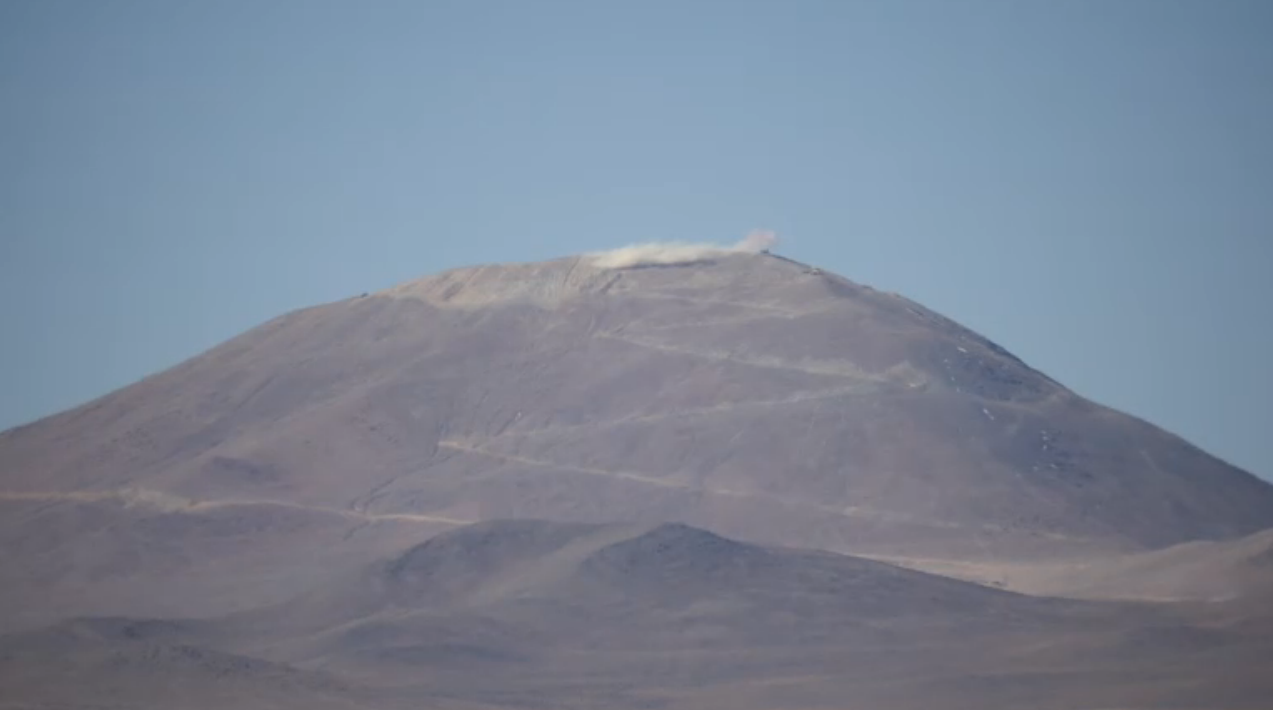
Mountaintop Explosion Signals Start of Huge Telescope's Construction (Video)

A modest mountaintop blast in Chile today (June 19) kicked off construction of the largest optical/infrared telescope ever built on Earth.
Officials with the European Southern Observatory (ESO) detonated explosives atop Cerro Armazones, a 9,842-foot (3,000 meters) peak in the Atacama Desert in Chile. The astronomy organization — a collaboration of 15 different partner countries — needs to shape the mountain before the European-Extremely Large Telescope (E-ELT) can be constructed.
The E-ELT is expected to start collecting data sometime in the next decade, and it will be outfitted with a 128-foot (39 m) mirror. ESO has referred to the telescope as "the world's biggest eye on the sky." [See artist depictions of what the E-ELT will look like]
"One of the most exciting programs will be to study the atmospheres of Earth-like planets orbiting other stars, and to search for signs of biological activity," Tim de Zeeuw, ESO's director general, said during a ceremony before the blast. "Finding evidence of life elsewhere in the universe would be a transformational development in the history of our species. It is actually quite ironic that this could happen right here in the Atacama Desert, one of the most beautiful, but certainly very lifeless, locations on our own planet."
The huge telescope is designed not only to examine alien worlds, but when it goes online it should also gather data about dark energy and dark matter, as well as probe the universe for other mysteries.
"It will dwarf every other telescope, and it will allow tremendous astronomical discoveries not only in the deep universe, but also closer to home," de Zeeuw said. "For example, providing an unprecedented look into the properties of the supermassive black hole that lurks in the center of our Milky Way."
Follow Miriam Kramer @mirikramer and Google+. Follow us @Spacedotcom, Facebook and Google+.
Breaking space news, the latest updates on rocket launches, skywatching events and more!

Miriam Kramer joined Space.com as a Staff Writer in December 2012. Since then, she has floated in weightlessness on a zero-gravity flight, felt the pull of 4-Gs in a trainer aircraft and watched rockets soar into space from Florida and Virginia. She also served as Space.com's lead space entertainment reporter, and enjoys all aspects of space news, astronomy and commercial spaceflight. Miriam has also presented space stories during live interviews with Fox News and other TV and radio outlets. She originally hails from Knoxville, Tennessee where she and her family would take trips to dark spots on the outskirts of town to watch meteor showers every year. She loves to travel and one day hopes to see the northern lights in person. Miriam is currently a space reporter with Axios, writing the Axios Space newsletter. You can follow Miriam on Twitter.
